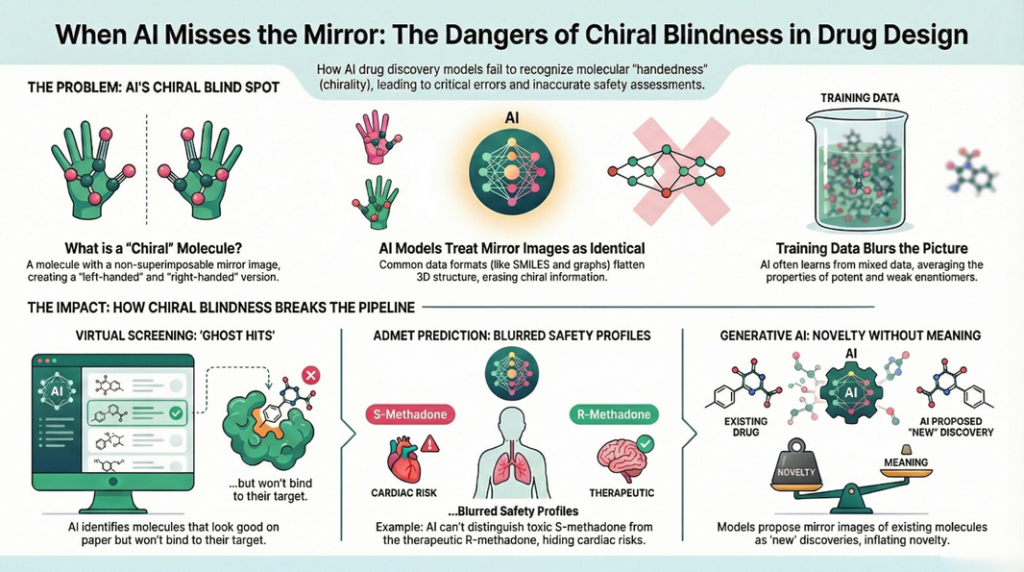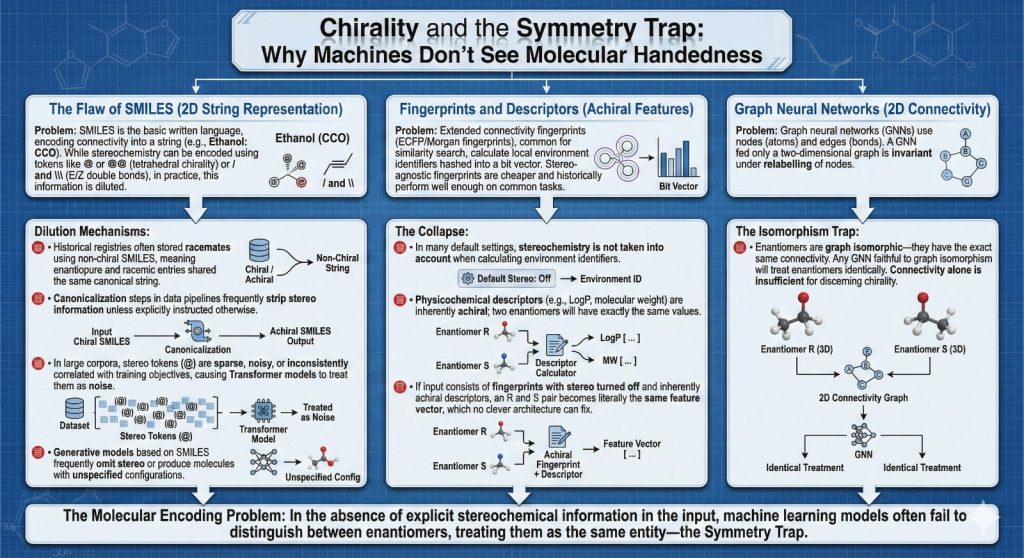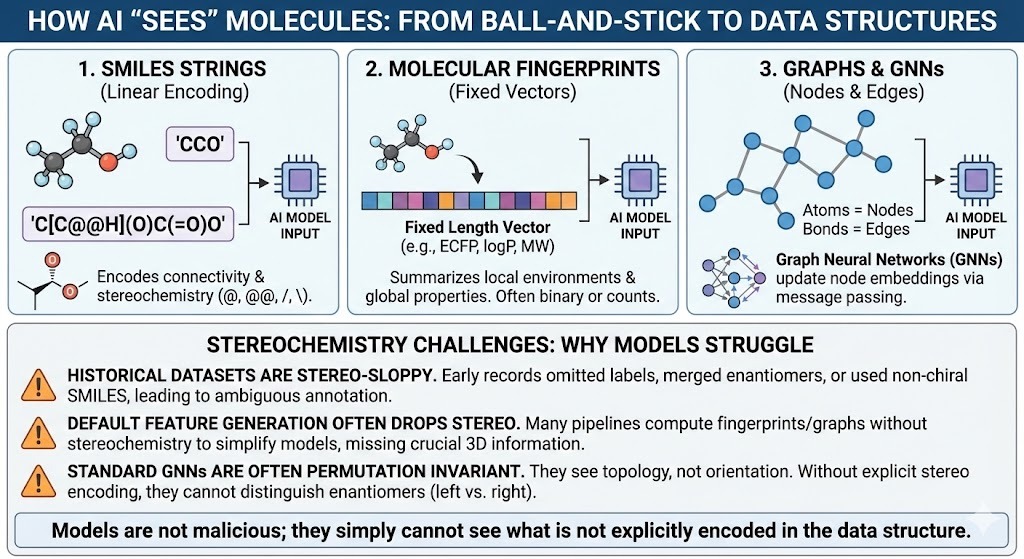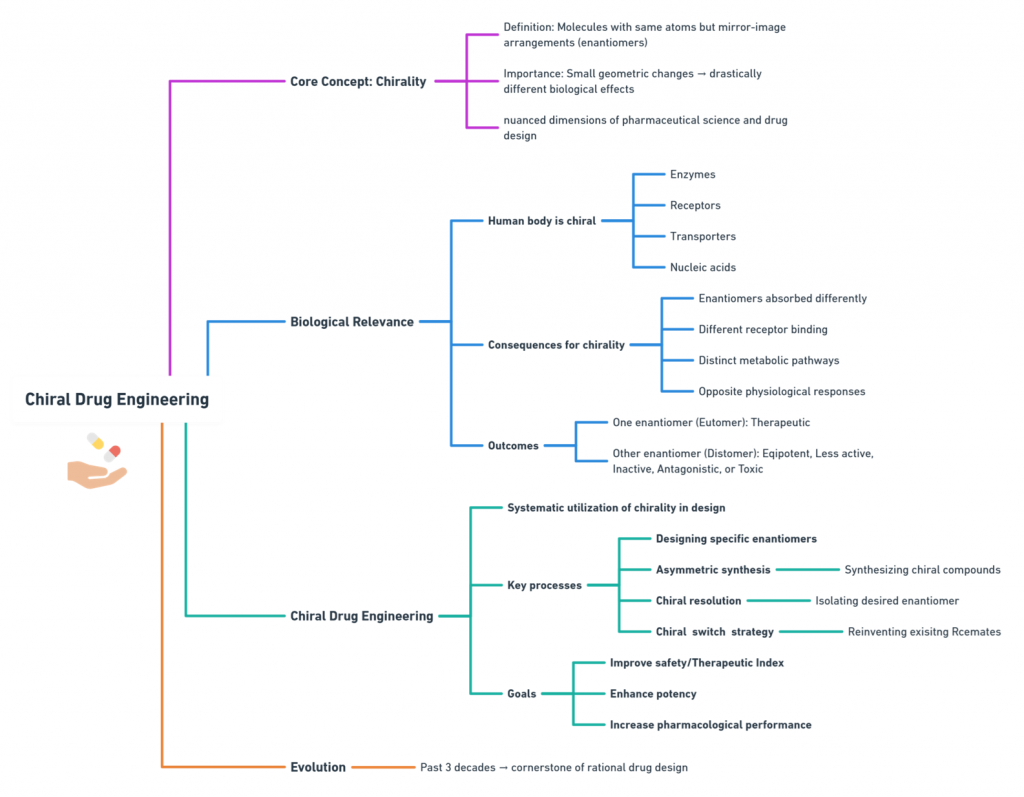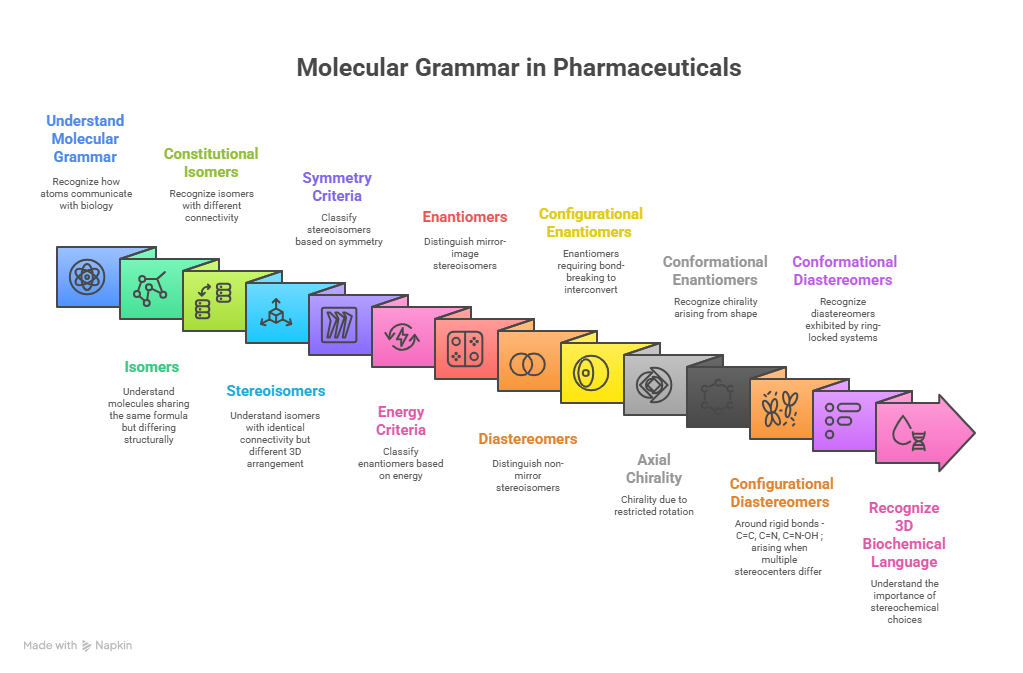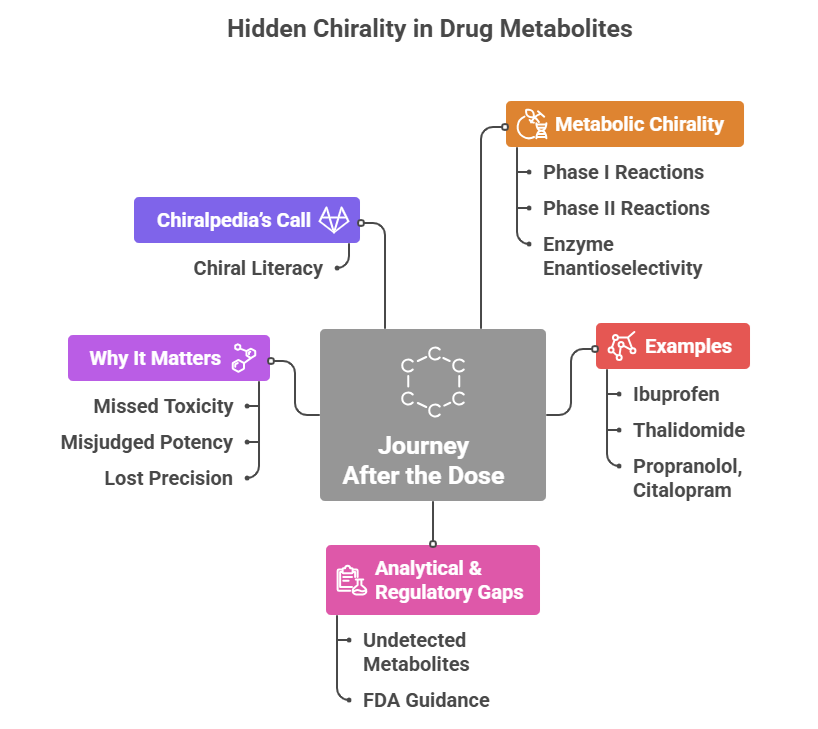Episode 3: When Algorithms Miss the Mirror: How Chiral Blind Spots Break the Pipeline?
“When molecules have two hands but AI only sees one.” On Visuals and Stereochemical TruthSome illustrations in this series are generated or assisted by AI to support conceptual understanding. These visuals are intentionally simplified and should not be read as stereochemically rigorous or chemically exact representations. Wherever stereochemical fidelity matters, it is addressed explicitly in the discussion—because in chemistry, especially in chiral systems, intuition must always yield to structure. The first two parts of this …
Episode 3: When Algorithms Miss the Mirror: How Chiral Blind Spots Break the Pipeline? Read More »
